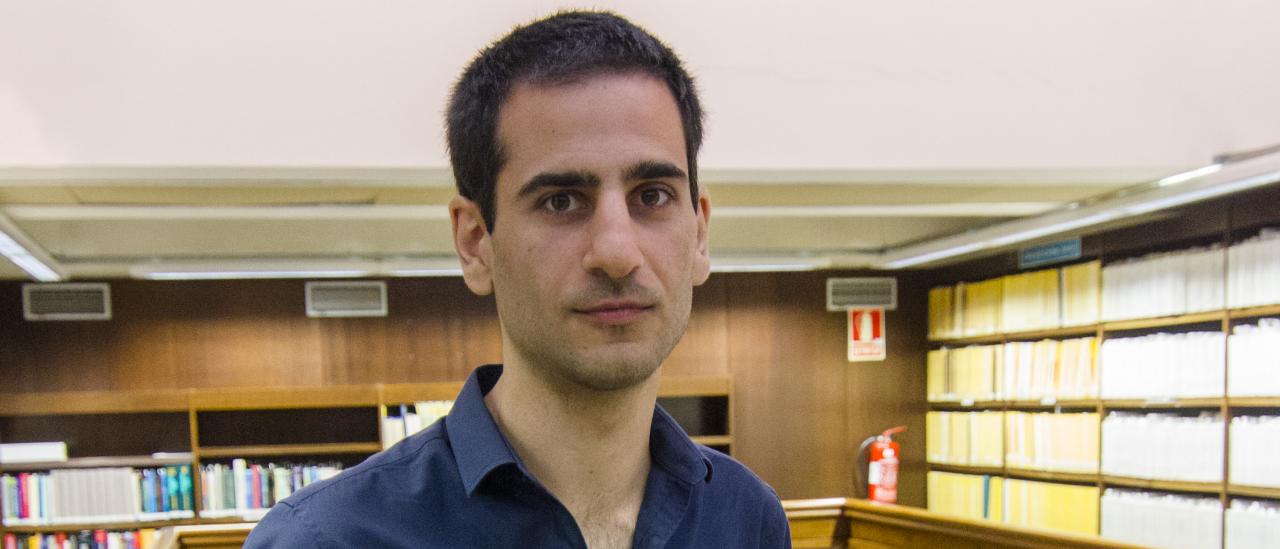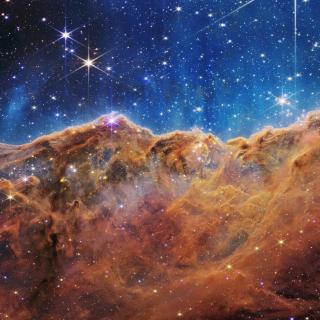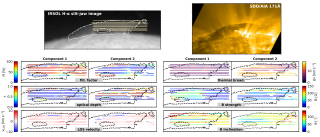Astronomer Dr David Sobral is on a quest to trace the origins of the Universe and understand how galaxies like our own formed and evolved from the end of the cosmic dark ages to galaxies we see today, much like our own Milky Way. He credits a boyhood passion for stargazing in the dark skies of Alentejo (Portugal), coupled with early help from the European Union Contest for Young Scientists (EUCYS) and Lisbon’s Astronomical Observatory. Since 2016, David Sobral is part of the new Observational Astrophysics group at Lancaster University (United Kingdom). This young astronomer has obtained very high impact results, including measuring, with a single technique, the decline of the star formation history of the Universe, and e.g. the discovery of the CR7 galaxy, the brightest of the early Universe and with hints of light sources similar to first generation stars or black holes. David Sobral recently visited the Instituto de Astrofísica de Canarias (IAC) within the Severo Ochoa Program of Visiting Researchers, which seeks to deepen scientific collaborations among leading research institutions.
“Looking in a different direction is always worth it, even if you think you won’t find anything. That’s when we discover the unknown unknowns”
“Apart from being an exciting way to figure out what Science is all about, astronomy really teaches us to be humble”
“Astronomy will provide future generations with valuable tools that can be applied in virtually all areas of society and that will help making the world a better place”.
1. What projects are you currently working here at the IAC?
Currently I’m collaborating with the “Estallidos” group. We have a lot of questions in common and we all want to understand how different kinds of galaxies form, evolve and how they work, from the early/young Universe until now. In order to do that we need to identify galaxies at a variety of cosmic times, so we can then study them in detail and try to understand how they evolve. In practice, we use some of the largest telescopes in the world, to time travel to the early universe and witness how those galaxies looked like and what physical processes were happening at different times. I’m confident that together with the “Estallidos” group we will be able to join forces and make a few more contributions towards our understanding with telescopes in La Palma.
2. What impression did the IAC give you after your visit?
I think it is quite impressive. I visited the IAC for the first time in 2012 and was already impressed, specifically because in Portugal, where I am from, the astronomy community is completely different. We don’t have and we never had our own large telescopes. There is no institute like this that competes with the best international ones. It is really exciting to have people working on all different areas as well, including on the instrumentation for the telescopes here in the Canary Islands.
3. You led the team that discovered the “CR7” galaxy, the brightest galaxy of the early universe with hints of the first generations of stars. What made this discovery so special to the point of being among the top ten of discoveries of ESO?
This was quite an exciting discovery which is part of the research I’ve been pushing for and leading over the last three to four years with my outstanding students. It essentially began when we started looking at very early galaxies in the very distant universe. Instead of using the Hubble Space telescope (HST) and looking at a very tiny area in the sky, we wanted to do it differently and explore a new parameter space. We were aiming to look for bright rare galaxies in the early universe so it was clear we needed to cover very large areas, and would not be able to go as deep as observations in tiny areas. This was of course very challenging and led to quite a lot of dead ends along the way, but we kept improving our methods, persevered, and in the end showed that it really pays off.
We have now found quite a few very bright galaxies in the early Universe, which we are studying in detail, and showed that they are about 30 times more common than previously thought. The brightest one we have found so far in a specific hydrogen line is the galaxy we have called COSMOS Redshift 7 or “CR7”. “C” is because it was discovered in the field that is called “COSMOS”. “R” is for its redshift of 7, which basically give us the distance to the object. That is why we called it “CR7”. We thought we should give it a name instead of been just the coordinates that people will never remember. At the same time, we also understood that it could be quite nice for outreach purposes and to reach a much wider public, due the potential association with the football player Cristiano Ronaldo. In addition, the brightest in the ultra-violet of these galaxies was also the fifth to be discovered, and we named it “VR7”, in honour of Vera Rubin, astronomer who found outstanding evidence for dark matter.
4. Instead of conducting a deep study of a small area you broadened the scope to produce the widest survey of very distant galaxies ever attempted. Why did you chose to do that?
I guess that the fundamental reason has to do with the way I like to do research. If everyone else is doing something, I see no point in also doing it, unless we come up with a new twist or a new approach. What we usually do is to take different paths, try new methods, new approaches, and also take risks when we can. Looking in a different direction is always worth it, even if you think you won’t find anything. That’s when we discover the unknown unknowns. Of course, this approach makes things much harder, and many searches fail.
5. But that time was successful.
Yes, after a lot of attempts and a lot of hard work, we were able to show that large area surveys can be very successful. That really encouraged us to continue and expand our surveys.
6. Would you encourage future generations to study astronomy? Which message would you give them?
Definitely! Astronomy is a really exciting way to figure out what Science is all about and, as a bonus, it really teaches us to be humble. Astronomy shows us how meaningless we are in the face of the vast Universe; yet, together, as a community, we can make outstanding discoveries of sources billions of light-years away. And while it’s true that we’ve discovered so much about the Universe, most of it is still completely unknown. There is actually so much to be discovered that it is certainly an area worth pursuing. It will also provide future generations with valuable tools that can be applied in virtually all areas of society and that will help making the world a better place.



